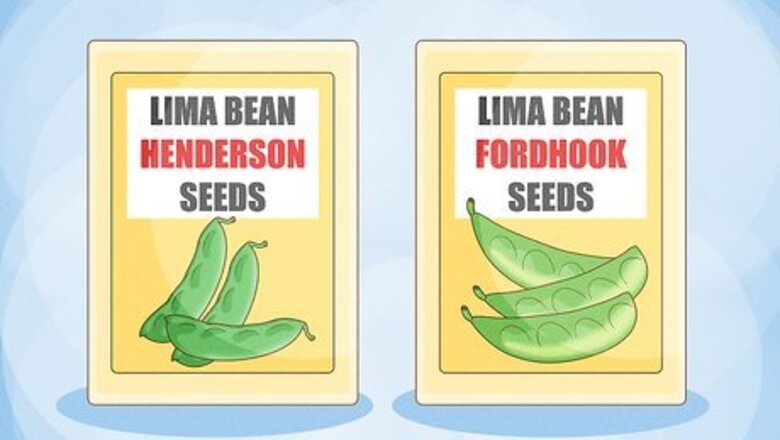
views
Starting the Seeds

Acquire lima bean seeds. There are two main varieties: bush beans and vine (pole) beans. They are often labeled determinate and indeterminate, respectively. Lima beans are annuals, which means that they grow within a single season once a year. Find lima bean seeds at a local nursery or garden-supply store. Bush beans tend to mature more quickly. They are called "determinate" plants because they yield all of their beans at one time. The bushes grow up to 30-90 centimeters high. Stick to bush varieties (like Henderson or Fordhook) if you're growing lima beans in a pot. "Indeterminate" vine varieties mature more slowly, but they yield a better harvest per square foot, and they tend to have fewer problems with disease. On a pole, a vine plant can grow 2-4 meters high. Consider growing this variety in a small garden.
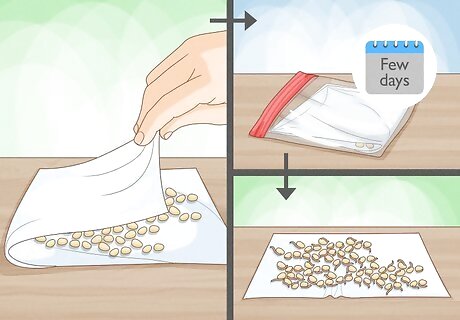
Germinate beans in a bag. Wrap your lima beans in a wet paper towel, then seal the towel inside an airtight plastic bag. Let the seeds germinate for a few days, until they sprout stems and small roots. Each bean should feature one prominent, noticeable stem.
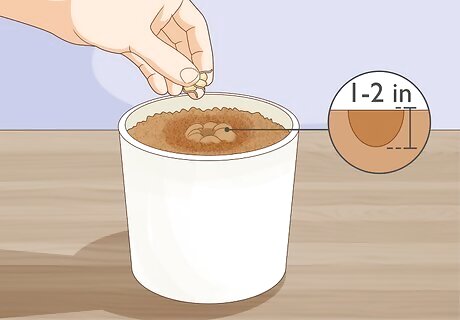
Start seedlings in a pot. If you live in a region with a short growing season, start the seeds in seedling pots roughly 3-4 weeks before you expect the final frost of the spring. Bury each seed beneath 1-2 inches of loose soil. Keep them in a warm, moist environment, no cooler than 60° Fahrenheit and no hotter than 70°. Consider using a biodegradable peat or paper pot. Lima bean seedlings can be delicate and difficult to transplant, so it is safest to use a pot that you can plant directly into the ground. Do not try to plant a clay or plastic pot into the ground, as this will limit the plant's growth.
Sowing and Growing
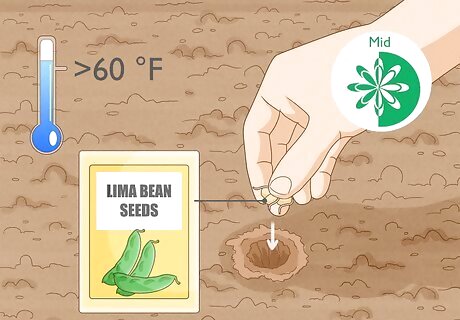
Sow the seeds or seedlings in the mid-spring. Lima beans are native to Peru, and they grow best in warm climes where the temperature stays about 60-70° Fahrenheit throughout the growing season. Plant the seeds 2-4 weeks after the final spring frost, once the weather begins to warm. The temperature should not dip below 60° Fahrenheit in the evenings. Sow seedlings, if you started them indoors, or simply sow the seeds. In the Midwest, lima beans are usually planted between May 20th and June 30th. Make sure not to plant the seeds too early! They will rot in cool, moist earth. If you plant them too late, however, the high temperatures may interfere with pod growth.
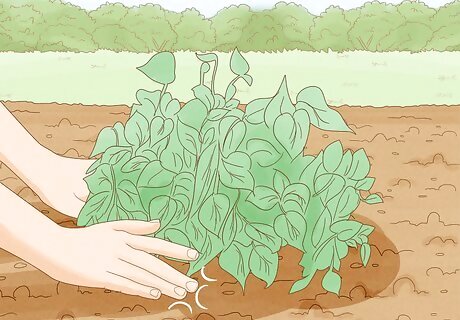
Consider staggering bush bean planting. "Determinate" bush varieties yield all of their beans at once, which can be a lot to handle if you aren't able to sell, cook, or freeze all of the crop within 10-14 days. If you want to ensure a more gradual harvest, try planting a new batch of bush beans every two weeks for 6-8 weeks after the last frost. This should keep your bean harvest going for longer.
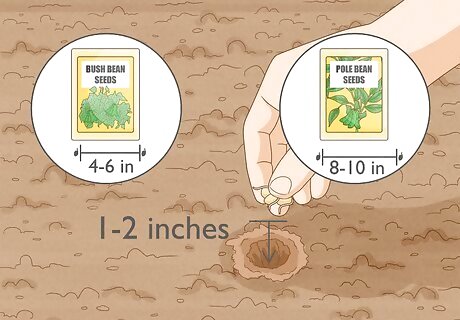
Plant the beans 1-2 inches deep in soft soil. Set bush beans 4-6 inches apart, and pole beans 8-10 inches apart. Sow them with the eye of the bean facing downward into the soil. If you are planting multiple rows of lima beans, make sure to leave 24-36 inches between the rows for easy access and unrestricted growth. The perfect planting site is sunny, well-drained, and moderately fertile. Aim for soil that is slightly acidic, with a pH of 6.0-6.8. Avoid high-nitrogen soil, and do not use a fertilizer that's been infused with extra nitrogen. Nitrogen fertilization will make the plant grow lush leaves, but it may limit bean pod growth. If you don't know the pH of your soil, do a soil test before you plant the beans.
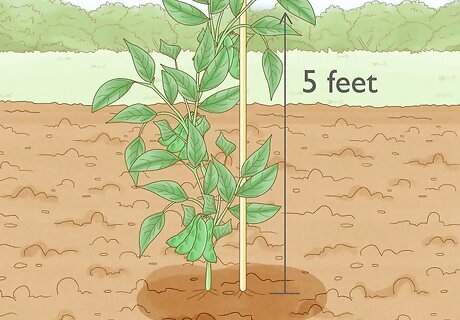
Make sure to provide a support structure for vine varieties. Indeterminate beans need a pole or trellis to reach their full growing potential. Set this up as soon as you plant the seeds (or even earlier) so that you do not risk damaging the delicate roots. Set up a wooden or metal pole that is at least five feet tall, and no more than an inch in diameter. The support should be securely staked into the ground beside the plant. As the bean plant grows, you will need to patiently guide the seeking vine so that it begins to wrap around the pole. Once the vine has "embraced" the pole, the plant should grow up and around the support without any further coaxing.
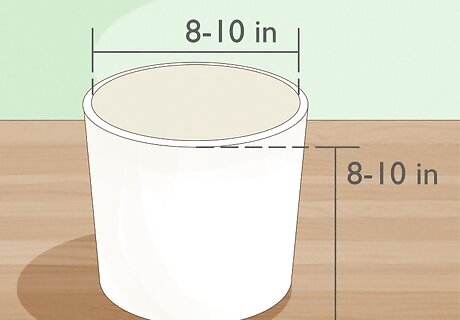
Consider container growing. If you are planting the beans in a pot: make sure to use a pot that is at least 8-10 inches wide, and equally deep. You should only grow one bush in each pot. Bush beans are better suited for container cultivation, although you can get away with a pole bean if the pot is large enough.
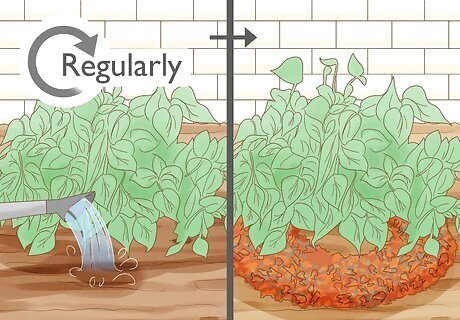
Water regularly. Keep the earth damp, but not soggy. Be careful not to water too heavily or too frequently, lest you drown the delicate lima bean seedlings. Be aware, however, that they require about one inch of water each week (from rain or irrigation) during the blossoming and pod development stages. Pour the water at the base of the plants, not over the top: disease and mildew can develop in consistently-wet foliage. Spread mulch around the base of the plant to conserve moisture. This will keep you from having to water every day, as the hot season develops, and it should keep the weeds down. Frequent watering is especially important in the heat of summer. Seed pods can dry and crack when the climate grows too hot.
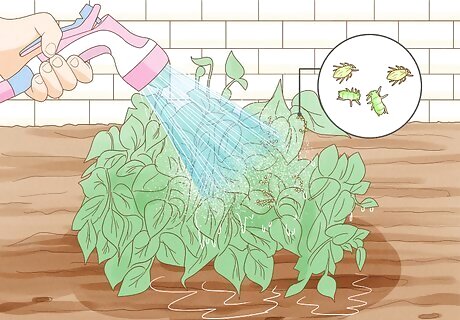
Keep pests away. Inspect your plants regularly for signs of pests. If you find any, try to identify what they are so that you can figure out the best way to get rid of them. Common pests on bean plants include flea beetles, aphids, and mites. Sometimes, you can just spray pests with a water hose to get rid of them. You might also look into using insecticidal soap or diatomaceous earth to remove them.
Harvesting
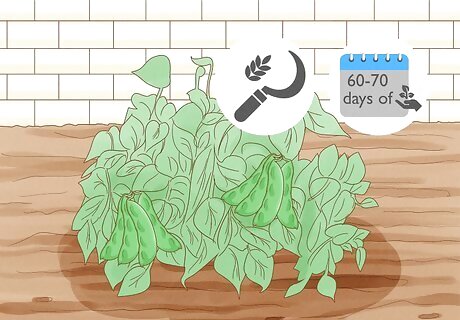
Wait for the plants to mature. Harvest bush varieties within 60-70 days of planting, and harvest pole beans after 85-90 days. The plant will flower, the flowers will die, and seed pods will appear. If you're growing bush beans, the harvest will come all at once. If you're growing a pole variety, expect to be pulling beans off of the vine for a month or two.
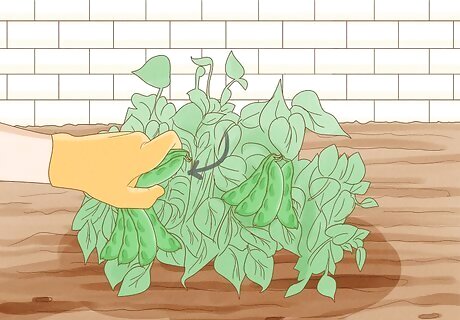
Harvest when the pods are bright green and filled-out. Be patient, but not too patient. If the beans dry out on the plant, they will be tough and practically inedible. To test, gently tug a seed pod that looks ready. If the bean comes easily off the vine, then it is ripe and ready. If it clings to the plant, then it might need a few more days. Try to pick pods as soon as they're ready. This will coax the plant to create new pods. Once you allow a couple of bean pods to over-mature, this usually triggers the entire plant to stop blooming and producing pods.
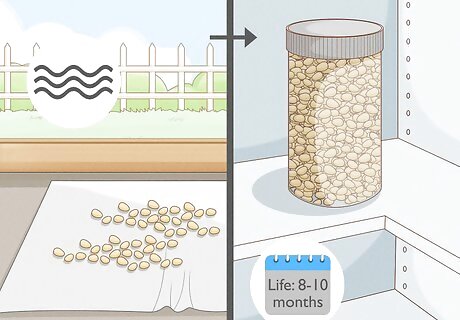
Dry and store the beans. You can prepare lima beans to cook right away, or you can dry them out for long-term storage. Freshly-picked beans will last for up to two weeks in the refrigerator. Try blanching the beans, then freezing them. This is a safe way to store them for longer periods of time. For very long-term secure storage, shell and dry the beans. Store them in a cool, dry, airtight container, and they will last for 8-10 months.












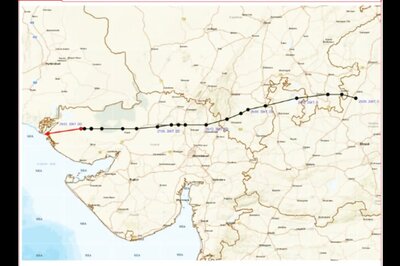
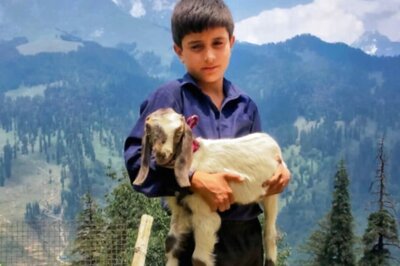





Comments
0 comment